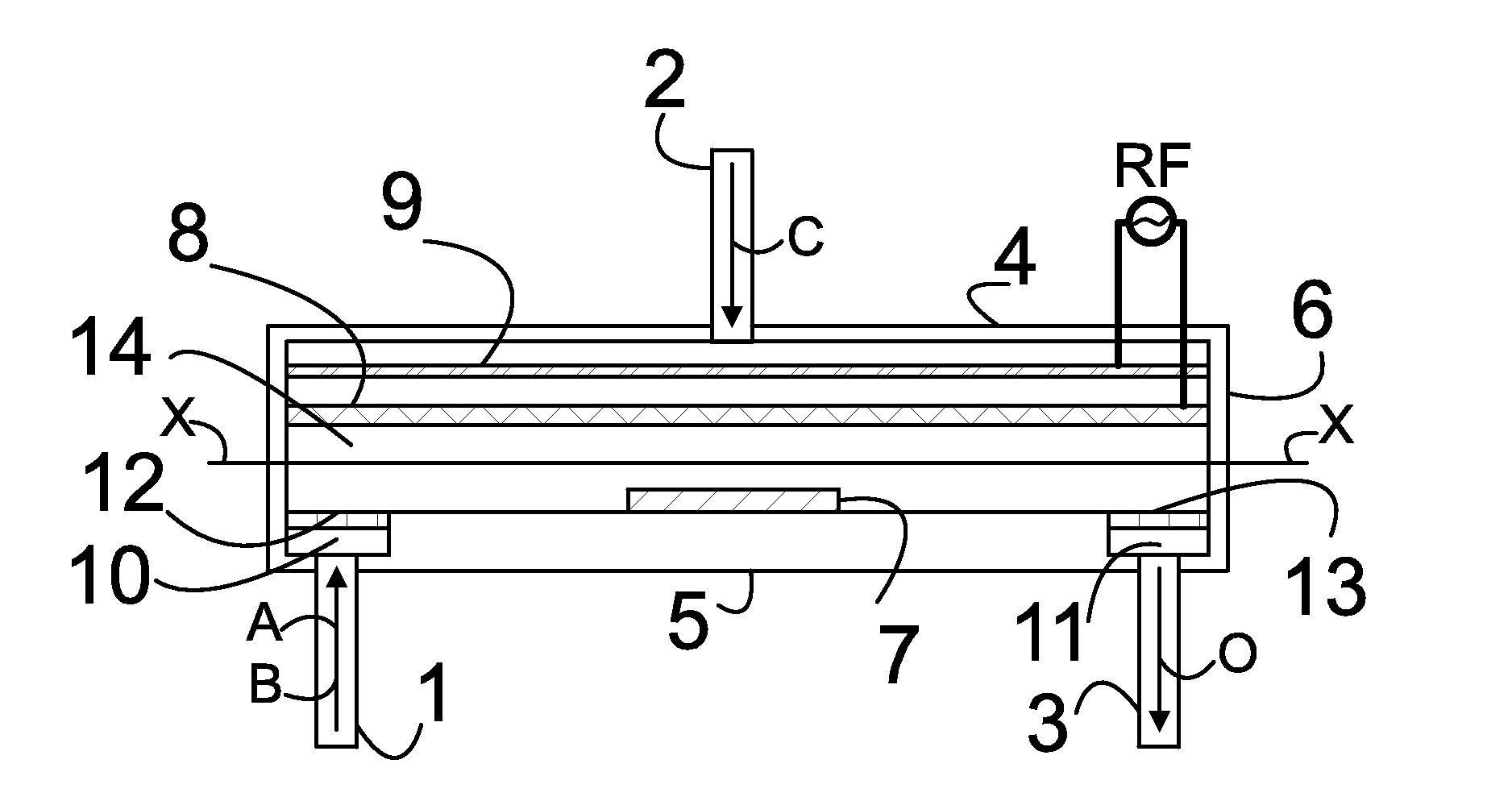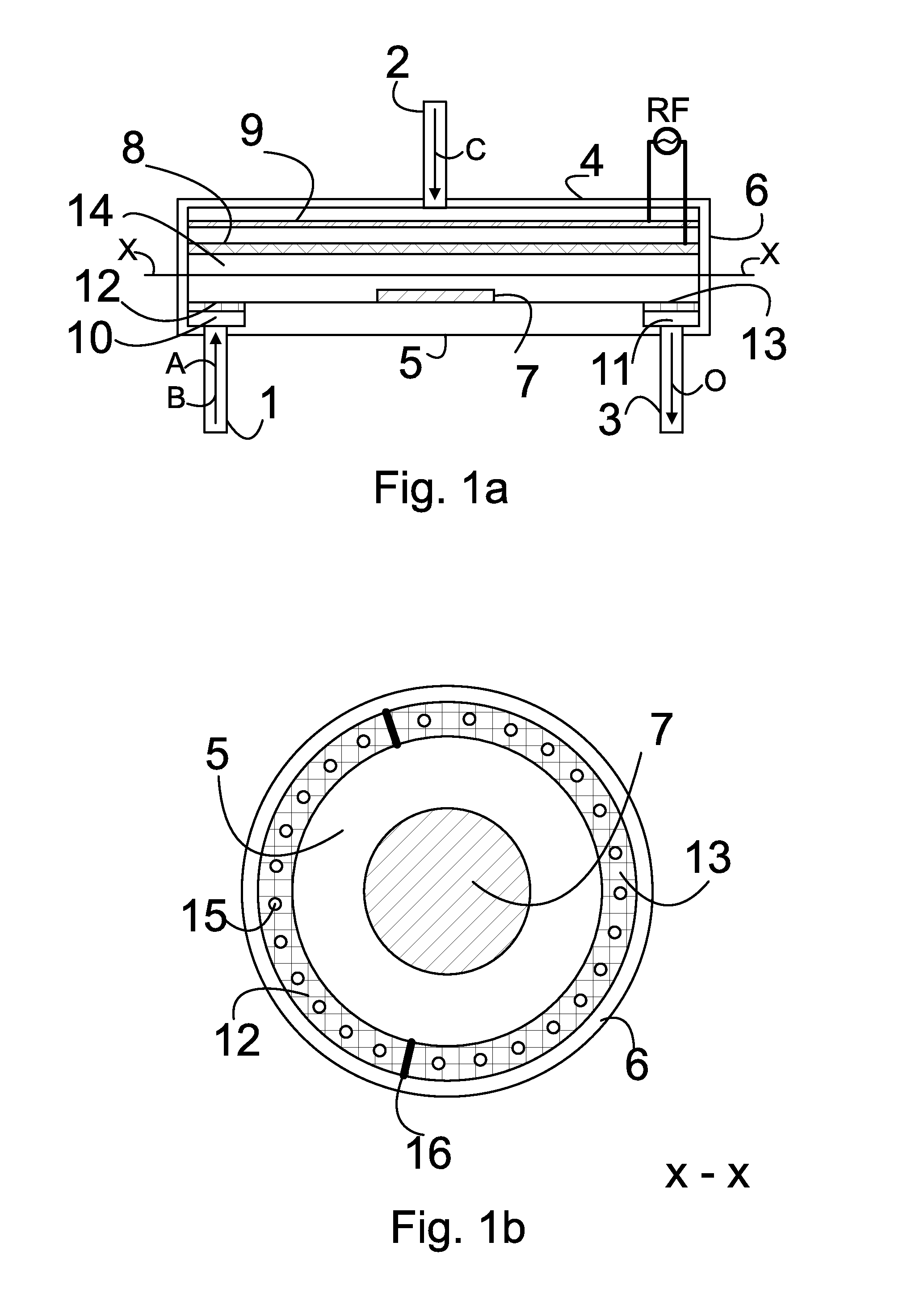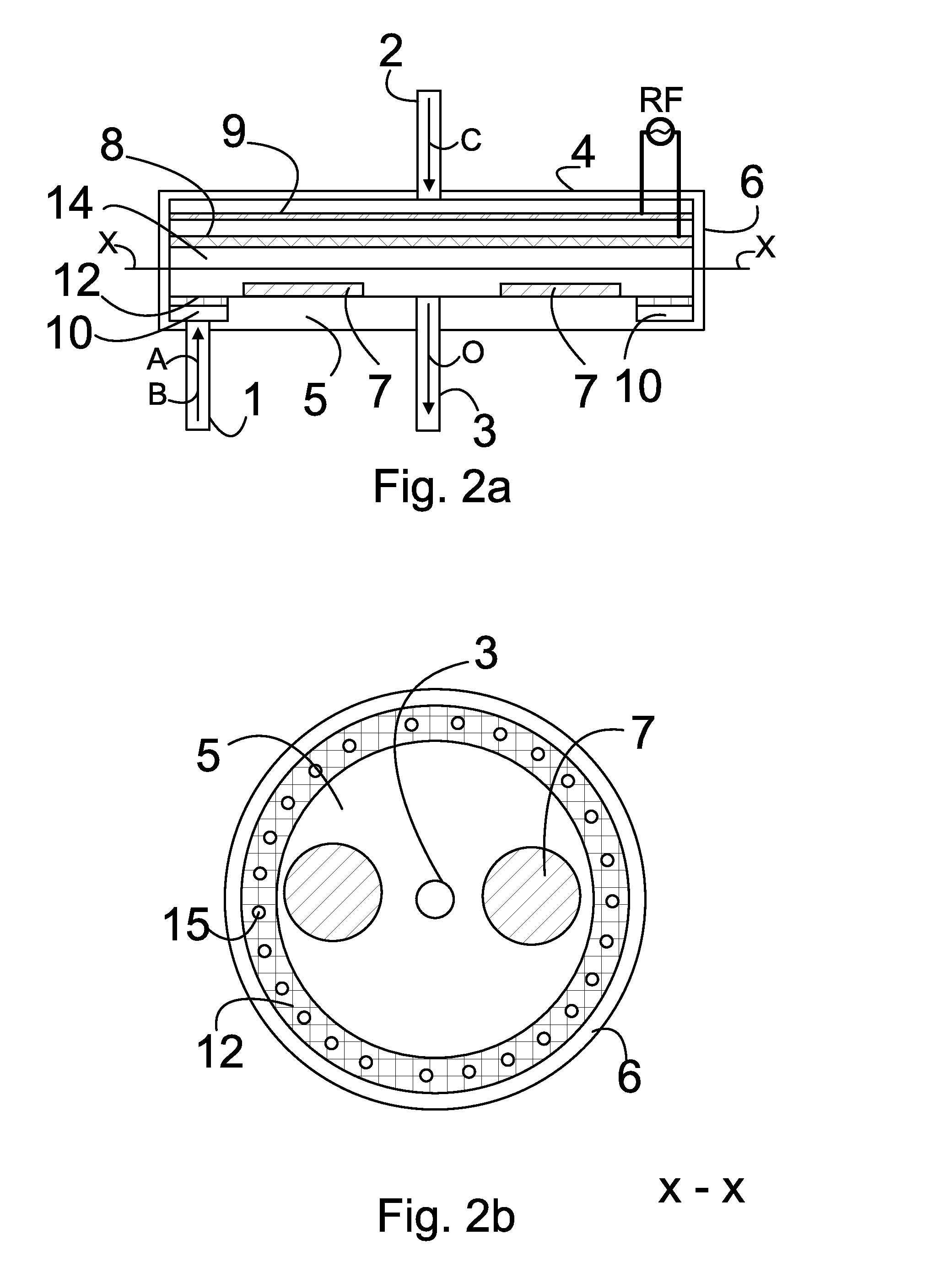Method and apparatus for generating plasma
a plasma and plasma technology, applied in the field of plasma assisted deposition and processing, can solve the problems of non-homogeneous film growth, self-limiting thin-film growth, and not optimized for flow dynamics, so as to facilitate process control, improve the uniformity of growing films, and reduce the time of ald cycle
- Summary
- Abstract
- Description
- Claims
- Application Information
AI Technical Summary
Benefits of technology
Problems solved by technology
Method used
Image
Examples
Embodiment Construction
[0031]In the following, the present invention will be described in more detail with references to the accompanying figures, in which
[0032]FIG. 1a is a schematic illustration of a cross section of a reaction chamber according to one embodiment of the present invention,
[0033]FIG. 1b schematically presents a cross-section of the reaction chamber illustrated in FIG. 1a,
[0034]FIG. 2a is another schematic illustration of a cross section of a reaction chamber according to one embodiment of the present invention,
[0035]FIG. 2b schematically presents a cross-section of the reaction chamber illustrated in FIG. 2a.
[0036]FIG. 3a is another schematic illustration of a cross section of a reaction chamber according to one embodiment of the present invention,
[0037]FIG. 3b schematically presents a cross-section of the reaction chamber illustrated in FIG. 3a and
[0038]FIG. 4 is a flow-chart illustration of a method according to one embodiment of the present invention.
[0039]Unless stated otherwise, th...
PUM
| Property | Measurement | Unit |
|---|---|---|
| Fraction | aaaaa | aaaaa |
| Fraction | aaaaa | aaaaa |
| Length | aaaaa | aaaaa |
Abstract
Description
Claims
Application Information
 Login to View More
Login to View More - R&D
- Intellectual Property
- Life Sciences
- Materials
- Tech Scout
- Unparalleled Data Quality
- Higher Quality Content
- 60% Fewer Hallucinations
Browse by: Latest US Patents, China's latest patents, Technical Efficacy Thesaurus, Application Domain, Technology Topic, Popular Technical Reports.
© 2025 PatSnap. All rights reserved.Legal|Privacy policy|Modern Slavery Act Transparency Statement|Sitemap|About US| Contact US: help@patsnap.com



